ILLUSTRATION CONTEST 2024
Column
On Illustrating for the Pokémon TCG as Told by Directors
We had an online chat with Satoru Nagaya and Haru Saito, who plan and direct illustrations for the Pokémon TCG at Creatures Inc., and Kevin Lalli, who oversees product design outside Japan for The Pokémon Company International, to ask them what illustrating for the Pokémon TCG is all about from their points of view.
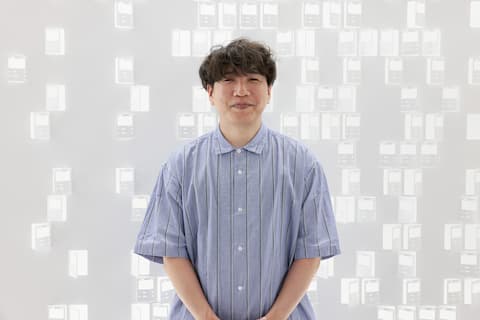
Satoru Nagaya
Creatures Inc.
Art Director
He is the art director of Creatures Inc. He is in charge of art direction, supervision, and the coordination of overseas adjustments for Pokémon card designs.

Haru Saito
Creatures Inc.
Illustration Director
As the illustration director, she is in charge of illustration planning for both Japanese and worldwide card releases as well as illustration quality control for the latter.
She also plays an important role in solidifying the underlying concepts of illustrations throughout the series. She also personally creates concept illustrations and art during the planning stage.

Kevin Lalli
The Pokémon Company International
Director of Design
As the director of Pokémon TCG design, he oversees Pokémon TCG design, including product packaging, package localization, card production, and marketing assets, outside of Asia.
What is The Pokémon Company International?
The Pokémon Company International, a subsidiary of The Pokémon Company in Japan, manages the property outside of Asia and is responsible for brand management, licensing and marketing, the Pokémon Trading Card Game, the animated TV series, home entertainment, and the official Pokémon website.
―――Tell us the reasons behind holding the Pokémon Trading Card Game Illustration Contest.
(Haru) Saito:Pokémon TCG continues to thrive because of the engagement with our talented community. We hold these contests to showcase new creators and see their artistry.
―――This year’s contest is accepting submissions from more countries than it did before. Please tell us why.
Saito:We’re aiming to increase the reach of the Pokémon Trading Card Game Illustration Contest with each new instance. We are expanding it so that more people can participate, regardless of physical and cultural boundaries. This year, we are accepting submissions from Japan, US, UK, Canada, Australia, and New Zealand. We expect to receive a variety of illustrations, each rooted in their own cultural background.
(Satoru) Nagaya:The production of Pokémon TCG cards is mostly up to Creatures Inc. but when it comes to illustrations—one of several creative elements of a card—we employ the help of outside illustrators. My hope is that we will continue to discover new talents with innovative ways of expressing themselves, which helps us make the Pokémon TCG more fun than ever.
(Kevin) Lalli:I am so excited that the Pokémon Trading Card Game Illustration Contest has expanded to additional countries as this broadens the opportunity for us to see a wide range of imaginative illustrations from more talented artists. Pokémon is beloved worldwide, spanning cultures and generations. It’s a true delight to see how Pokémon fans express their creativity and love for Pokémon through their art.
―――What role do illustrations play in the Pokémon Trading Card Game and what is their appeal?
Nagaya:Card games can be enjoyed in two ways—either by collecting them or by using them to play against other people. Illustrations play a role in both of these. While collecting cards, you can enjoy the illustrations as they are and, for example, try to gather cards featuring your favorite illustrator. Illustrations also play many roles in making battles more fun, and there’s an example that makes this really clear. When the illustration shows one of the attacks available to the Pokémon in the card, it really helps immerse yourself in the battle. It’s the kind of thing that makes gameplay fun. This is why illustrations are such an important aspect of Pokémon TCG cards.
Lalli:The illustrations are iconic! They are the first thing Pokémon TCG players notice when opening a booster pack. Not only do the illustrations portray the unique characteristics of each Pokémon, but they also tell a story through each card’s unique art style and technique.

―――Tell us about the rules for drawing for the Pokémon TCG. And also, tell us about how much freedom is given to illustrators.
Saito:The most basic principle is that the featured Pokémon must be drawn as the main character. For example, in the case of a Pikachu or Charizard ex card, it’s important to make it clear who the main Pokémon is. After that, it’s also important to show what kind of creature that Pokémon is. Where does it live? How does it behave? In other words, the whole premise is correctly bringing across the atmosphere of the Pokémon world. Once that is achieved, I’d like to see the illustrator demonstrate their individuality by creating something that only they can.
―――Please tell us what you find fun about interacting with the illustrators for the Pokémon TCG.
Saito:There currently are approximately 250 illustrators active in the Pokémon TCG. Each illustration they submit is a product of their uniqueness, and there is nothing as fun as seeing a new one for the first time and being surprised by its originality.
―――How would you describe the typical illustrator?
Nagaya:I feel that many of them are serious, diligent types. They understand what the Pokémon brand and the world built around it are about, and they enjoy showing their own creativity within it. I also get the impression that the quality of their work keeps steadily improving as time goes on.

―――Please tell us why you chose “Magical Pokémon Moments” as this year’s contest theme.
Saito:Choosing the theme was really difficult. Different people will find beauty in many different aspects of the same Pokémon. What we hope for is that the illustrators will find and freely express each Pokémon’s uniqueness in their own way.
Nagaya:The theme for the Pokémon Trading Card Game Illustration Contest 2022 was “The daily life of Pokémon.” There were many illustrations of sleeping Pokémon, probably because it was easy to imagine that as part of a Pokémon’s daily life. This time we wanted to see some more dynamic illustrations, so we settled on the “Magical Pokémon Moments” theme.
―――Considering the contest theme is “Magical Pokémon Moments,” what types of illustrations are you hoping to see?
Saito:Each Pokémon is beautiful in a different way. I’d love to see applicants understand what makes a certain Pokémon beautiful and then focus on bringing that beauty across to its full extent. The ideal illustration would make both the subject Pokémon and the illustrator shine.
―――Please tell us why you chose to accept submission for both standard and Pokémon ex card illustrations.
Nagaya:We’ve accepted standard card illustrations in all past Pokémon TCG illustration contests. The submissions showed Pokémon in many different scenarios, both battling and going about their daily lives. However, Pokémon ex cards focus on strong Pokémon specialized in battling, which is what the illustrations also depict. What makes Pokémon ex cards special is that the illustration pops out of the frame. I hope to see a lot of cool illustrations making use of this characteristic.
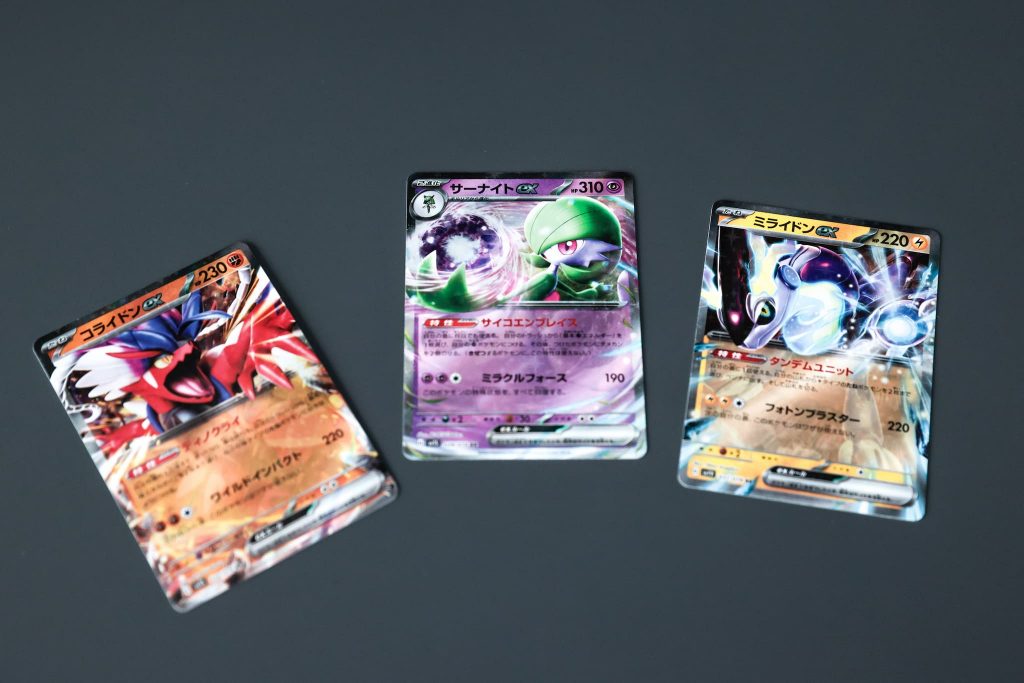
Some Pokémon ex cards available in expansion packs in Japan
―――Please tell us your reasoning and perspective behind choosing the 10 Pokémon subjects.
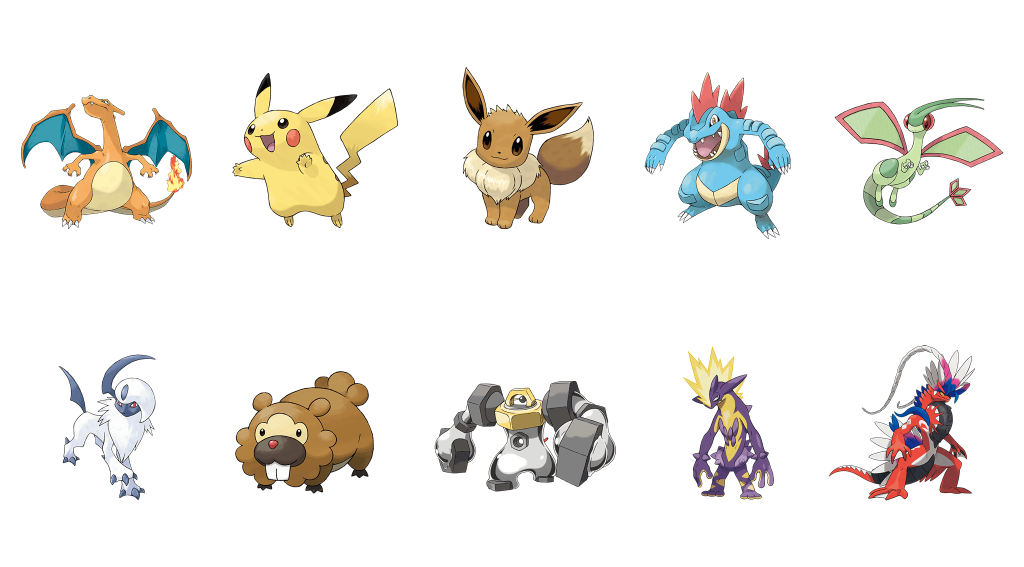
The 10 Pokémon subjects for this year’s contest
Saito:We chose these 10 Pokémon hoping to see beautiful illustrations of two kinds. These are Pokémon that lend themselves to be drawn both in their normal day-to-day lives as well as in cool battles. We also focused on providing a roster of Pokémon with different characteristics—ones that walk on two legs and ones that walk on four, ones that have a fluffy fur coat and ones that have a tough skin, and ones that have certain shapes and textures and ones that have the opposite ones. In addition, we researched what Pokémon are popular outside Japan to be sure to include them as well.
Nagaya:One of the subjects really makes me wonder what it’d look like on a Pokémon ex card. I won’t say which one it is though. (Laughs) Our goal is to allow the submissions to draw from as many ideas as possible.
―――For standard card illustrations, what kind of artwork are you looking forward to seeing?
Nagaya:First of all, the size of the illustration is fixed. I hope to see illustrations that clearly show what the subject is doing within that constraint. The applicants should be careful not to leave the viewer uncertain of what is going on.
Saito:Illustrations that make you feel like the Pokémon in it is a real, living creature are the ones that pack the most punch. However, there’s something you must be careful about. If the story portrayed in the illustration is too detailed or if it explains too much, it risks taking the focus away from the battle. Maybe focusing on a simple but effective illustration that doesn’t stand in the way of the game is the way to go.
Lalli:Standard Pokémon TCG cards are all about interaction and daily life. Illustrations on these cards can range from a scenic picnic or a cheerful Pokémon choir, to various Pokémon playing or taking a much-needed nap – whatever sparks the imagination. What I’m looking forward to the most is seeing how each artist takes the mundane and turns it into an eye-catching illustration.
―――For Pokémon ex card illustrations, what kind of artwork are you looking forward to seeing?
Saito:The most obvious difference between Pokémon ex and standard card illustrations is the frame. In a standard illustration, you have the background and the Pokémon in it. In Pokémon ex card illustrations, the main theme is drawing the viewer in so that they can feel the heat of the battle. Since the subject ends up closer to the viewer, things like the strength of its gaze, the texture of its body, and how believable the Pokémon looks become more important. These are two very different kinds of illustrations, and applicants can choose the one that provides them the best way to express their potential.
Nagaya:In a Pokémon ex card illustration, you need to draw the Pokémon and the surrounding effects as well as the background. As a result, the background tends to be difficult to see. I’d like everyone to make sure that while you can see the Pokémon jumping out of the frame and the effects around it, you can also clearly see the background.
Lalli:Pokémon ex cards are always dramatic. Some Pokémon ex cards can be imposing and others can be breathtaking, but they are always impressive. What sets Pokémon ex cards apart from standard Pokémon cards is how dynamic they are. These are grand statement cards – not only in the dynamic presentation of the Pokémon, but also in the foil and etch treatments. I’d love to see the creators tap into what makes their chosen Pokémon notable and explore the different ways in how they can capture the dynamism in Pokémon ex cards.
―――You are also accepting 3D Pokémon illustrations. Please tell us why.
Saito:We want the first visual that the viewer sees be a faithful representation of what Pokémon are supposed to look like, such as in the illustrations drawn on expansion packs and other packages. That’s one of the reasons why we’re focusing on 3D graphics. If you want to try your hand at modeling and rendering Pokémon in 3D, apply to the contest and let us see the results.
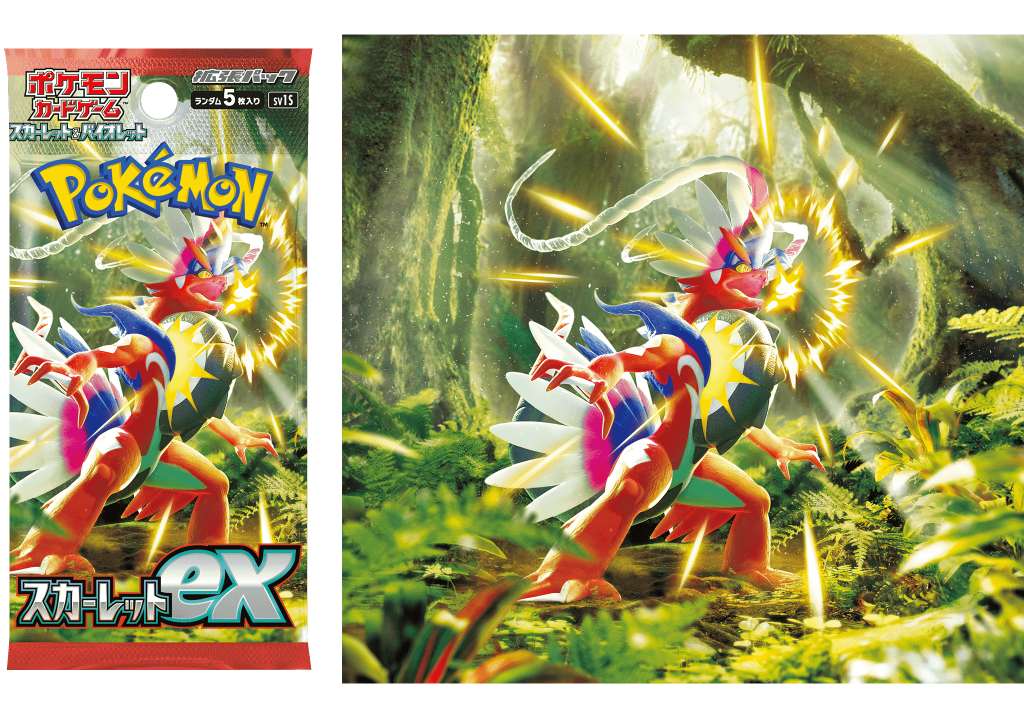
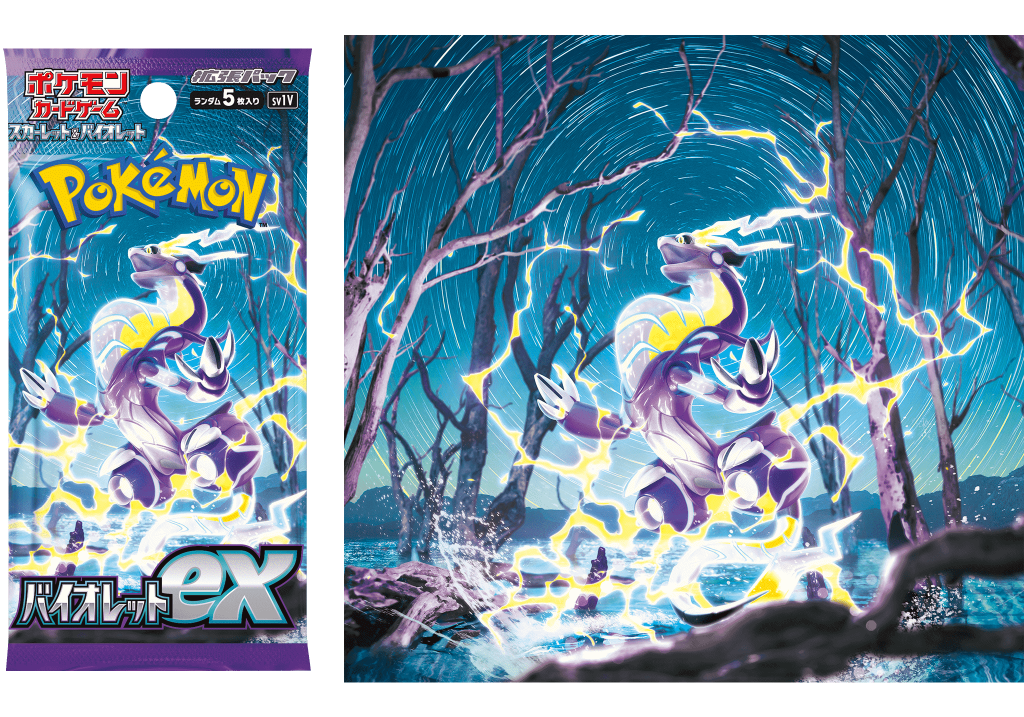
3D Pokémon illustrations used on packaging in Japan
―――What are some memorable reactions you have received from fans regarding Pokémon TCG illustrations?
Saito:It’s a bit of an abstract concept, but when players are left with thoughts and impressions we hadn’t planned for, as artists, that makes us very happy. Something else that really moves me is when I see people on the street who put a card they like—one that maybe isn’t even rare or famous—between the back of their smartphone and their clear smartphone case as decoration.
Nagaya:Back in the day, a child sent us an illustration based on the Pokémon TCG. You could see how this child was trying to go for a very complex composition to show how the Pokémon were fighting. I realized that what we are always going for with the card illustrations really came across to that child, and I was deeply moved by it.
*We no longer accept fan letters or illustrations outside of contests.
Lalli:I love watching kids open Pokémon TCG booster packs. My nephew runs around the house in a fit of excitement when he pulls a foil card or any card with high hit points. My son also gets caught up in his excitement and it’s incredibly rewarding and heartwarming to see first-hand the enjoyment that Pokémon TCG cards brings to people.
―――Lastly, do you have any advice for fans who are interested in entering the Pokémon Trading Card Game: Illustration Contest 2024?
Saito:Seeing the number of applicants for the Pokémon Trading Card Game Illustration Contest increase makes us feel very motivated. The thing I look forward to the most is seeing illustrations unique to you and your style. You may feel like you have to draw an illustration that “looks like a Pokémon card,” but that’s not necessary at all. I hope that you’ll be able to draw something that no one but you could and take pride in it.
Nagaya:I would like to ask applicants who have participated in the past Pokémon Trading Card Game Illustration Contest to consider drawing a Pokémon ex card illustration. Maybe, in that way, you’ll find out a new talent that you didn’t know you had. Don’t be scared to try.
Lalli:Have fun, be yourself, and allow your imagination to run free. Engaging in creative activities – whether through drawing, painting, writing poetry, cooking, or playing an instrument – offers a healthy outlet to express whatever emotions you may be feeling. Creativity is a gift that people often suppress when getting caught up in what others may think but this contest is a chance to express that creativity in a way that showcases your passion for both art and Pokémon. Develop your own voice and let it flow through your artwork. I can’t wait to see your ideas and how you portray “Magical Pokémon Moments.”
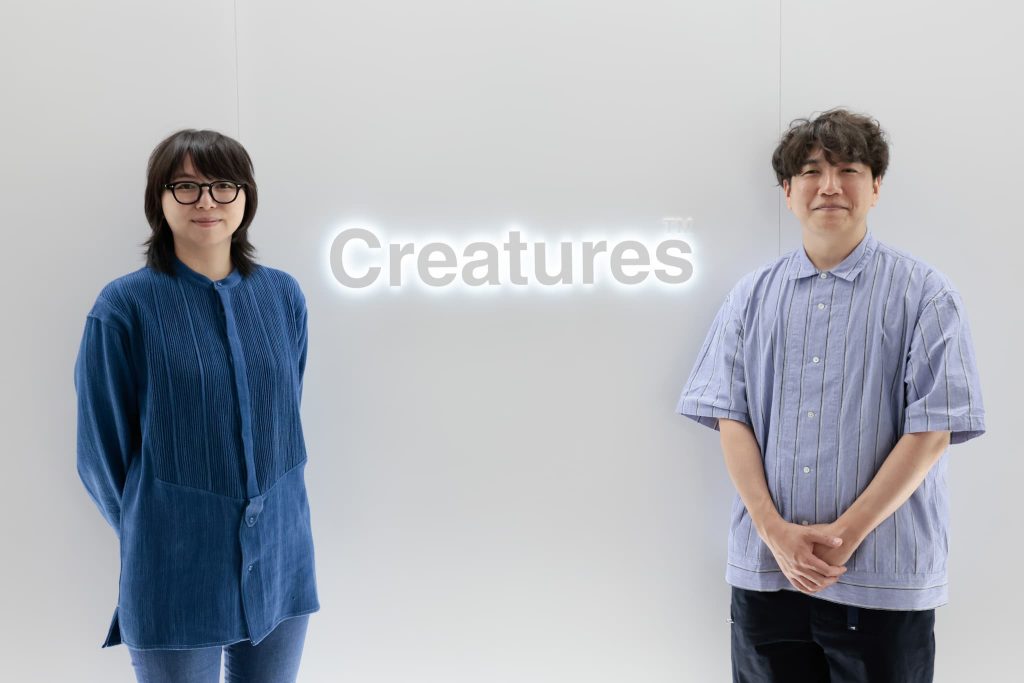

Composition and text: Shusuke Motomiya (One-up), Photos: Kayoko Yamamoto